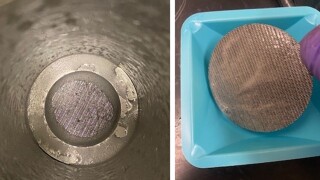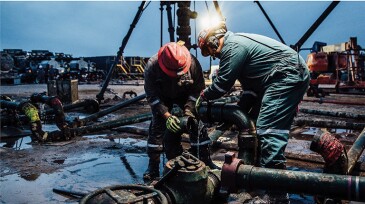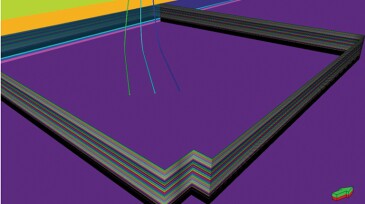Completions
Ranger acquires American Well Services for $90.5 million, adding 39 workover rigs and boosting its fleet by 25%.
In this third work in a series, the authors conduct transfer-learning validation with a robust real-field data set for hydraulic fracturing design.
This paper describes development of a high-temperature water-based reservoir drill-in fluid using a novel synthetic polymer and customized with optimal chemical concentrations and sized calcium carbonate.
-
In previous features, the focus has been on what is new or reimagined. Therefore, I thought that, in selecting papers for this year’s feature, it would be useful to select ones that look at coiled tubing operations performed and that have been evaluated in one way or another.
-
It won’t happen overnight, but a growing number of US shale players are taking important steps to bring more automation and stage-level decision making to the hydraulic fracturing process in tight reservoirs.
-
Hydrochloric acid continues to be the most effective and low-cost material for carbonate stimulation. Though exotic chemistries such as chelating agents and organic acids have been promoted for being less corrosive at high temperatures, the cost and dissolving capacity limit their use to large-scale implementation. The ability to inhibit the corrosion tendency of hydr…
-
The paper presents a case study of fracture interaction mitigation in a multistage horizontal stimulation of an offshore Black Sea well.
-
The paper describes the iterative process of development of a novel shear blade able to cut high-strength coiled tubing with 50% of the normal shear force.
-
Using validated models, the authors provide a comparative analysis to determine the advantages of using natural gas foams relative to conventionally used slickwater, linear gel, and crosslinked fluid.
-
This issue marks the debut of the Hydraulic Fracturing Operations feature in JPT. While hydraulic fracturing has long been a feature topic, this year, we are branching this major area of interest into both this feature and a Hydraulic Fracturing Modeling feature, which will appear in the November issue of the magazine.
-
The authors have investigated the effect of perforation hole size, geometry, and shape on the coefficient-of-discharge value at ambient conditions and with backpressure, before and after sand erosion.
-
The paper reviews 25 well interventions in fields in the Bolivian Sub-Andean Basin, which are remote and difficult to access. The producing zones include the country’s most challenging wells with depths of up to 26,000 ft.
-
A growing volume of free data and reports from US shale fracturing test sites is available, with more on the way.













